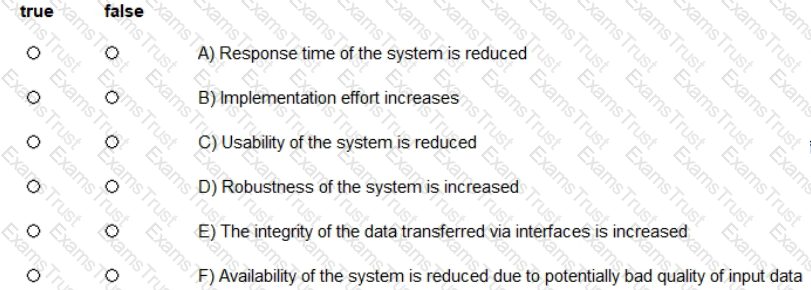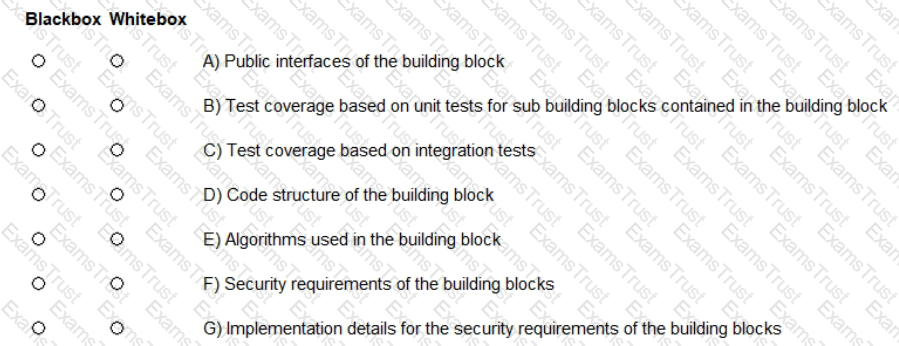Name the three most important fields of template-based architecture documentation. (Choose three.)
Concerning external interfaces, Postel's law suggests: "Be conservative in what you do, be liberal in what you accept from others." Assume that Postel's law has been consistently applied in your system. (Assign all answers.)

Which characteristics of a building block are only visible in the whitebox view, and for which characteristics does the blackbox view suffice? (Assign all answers.)

Which of the following statements about the coupling between building blocks are correct? (Assign all answers.)

You want to demonstrate to colleagues that certain building blocks are suitable for the implementation of a use-case scenario.
Which of the following UML diagrams is best suited for this?
Which statements regarding top-down and bottom-up design are true? (Assign all answers.)

Which three artifacts does the assessment team create when conducting an ATAM evaluation? (Choose three.)
Which of the following statements regarding the design principle ‘information hiding’ are true and which are false? (Assign all answers.)

Which of the following statements regarding iterative and incremental design are correct? Please name the three statements that fit the best. (Choose three.)
Which of the following statements apply to design patterns? (Choose two.)
Which statements with regard to project objectives and architectural objectives are true and which are false? (Assign all answers.)

Which of the following statements about (crosscutting) concepts are most appropriate? (Select four.)